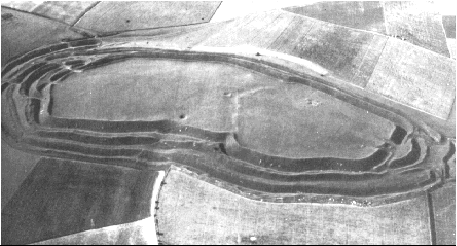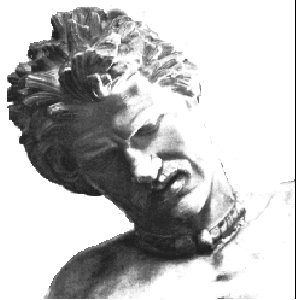|
|
|
The Celts |
From about 1,000 B.C. until the dawn of
the Christian era, the Celts dominated much of western Europe north of
the Alps. They did not belong exclusively to one of the three European
races - Nordic, Alpine and Mediterranean - but were a mixture of the
first two. They were descended in part from Battle Ax people who came
from the north of Europe and in part from Beaker folk who had been
living in the upper Danube Valley.
The first Celts began
crossing the Channel into Britain about 1,000 B.C. They were few in
numbers and their move was more in the nature of migrating families.
They made little impression on the Urn communities. About 750 B.C.,
Celts began invading Britain in far greater numbers. There were further
invasions in the 5th, 3rd and 1st centuries B.C. The last Celtic
invaders were the tribes of the Belgae who began coming to Britain about
75 B.C.
Like their predecessors,
the Celts in Britain were an agricultural people, living in farmsteads
or village groupings among the fields they cultivated. Harvested grain
was roasted and stored in the farmstead, either in timber granaries with
raised floors or in deep pits. They raised pigs, goats, cattle and heep.
They spun thread and weaved it into cloth. Their farms were largely self
supporting except for metals, which they purchased from itinerant
traders. Members of the various farm communities were loosely organized
into tribes. Since they often fought with one another, the Celts
fortified their settlements. Smaller ones were created by earth banks or
palisades. Hundreds of such farmsteads, spanning several centuries have
been documented. Tribal meetings were held at larger forts, often built
on Skeletal remains, Celtic art and descriptions by
classical writers agree that the Celts were tall with fair skin, blue
eyes and blond hair - considerably different from the shorter, darker
men of the Mediterranean world. Celtic graves often contain remains of
both long-headed and round-headed men. Archaeologists believe the former
represents the Celtic type, the latter the descendants of the older
Bronze Age population. The common burials prove they coexisted. |
 |
|
The Celtic hill fort Maiden Castle, seen from the air, reveals successive stages of
development
from
plateau enclosure to complex defense system. |
The Belgae maintained close connections with kinsmen in France, or
Gaul, where Julius Caesar was pushing the Roman frontier northward.
Caesar knew that the Celts in Gaul were receiving aid from the Celts in
Britain, so in 55 and again in 54 B.C., he crossed the Channel to
conduct punitive expeditions. These were the first Roman invasions of
Britain. Caesar may have hoped for an easy conquest, but his expeditions
were failures. The Celts considered personal bravery in battle, even
recklessness, the highest virtue. They loved feasting and quarrelling,
praise and boasting, personal adornment and bright colors. Caesar's
first invasion was met by Celts fighting in chariots, on horseback and
on foot. They proved so formidable that he returned to the continent. In
his second expedition, he marched inland, stormed a Belgic hill fort
near Canterbury, crossed the Thames near modern London, and after hard
fighting obtained submission and a promise of tribute from the principal
chieftains of southern Britain. He returned to Gaul knowing that Britain
was still far from conquered.
Circumstances never permitted him to make a third attempt, but his Commentaries
reveal much about the Celts. Caesar reported that the population was
large and the cattle numerous. The Celts used bronze or gold coins. The
interior tribes lived on milk and meat and wore skins. They dyed
themselves with woad, which produced a blue color that gave them a
frightening appearance in battle. They had long hair and shaved their
entire bodies except the head and upper lip. Celtic women also impressed
classical writers. Diodorous recorded that like their men they were not
only great in stature, but also their equals in courage. Ammianus
Marcellinus wrote, "a whole band of foreigners would not be able to
withstand a single Gaul if he called on the help of his wife, who is
usually stronger than he and blue eyed."
After Caesar's withdrawal, the British Celts remained fiercely
independent for almost another century. During that time the Belgic
princes grew stronger and extended their territory. They constantly
fought among themselves and warred on other tribes. The resulting
hatreds precluded the various tribes from effectively banding together
to repel a major invasion.
|
 |
The Dying Gaul. A very striking sculpture with the
characteristic flowing hair,
moustache and torc
of the Celt. This is a Roman copy of one of the statues
which
adorned the altar to Zeus at Pergamon. |
|
| |
|